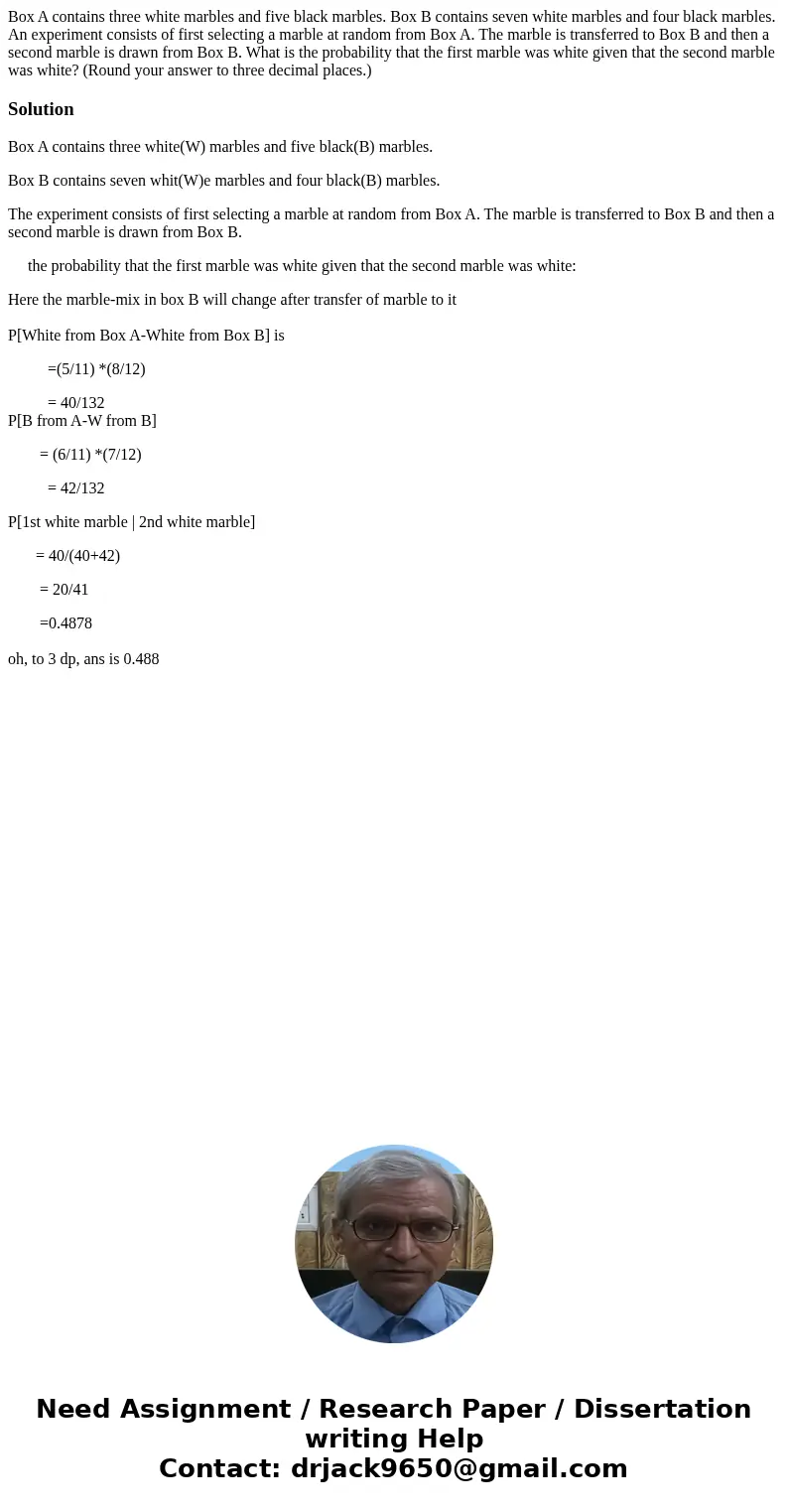Box A contains three white marbles and five black marbles Bo
Box A contains three white marbles and five black marbles. Box B contains seven white marbles and four black marbles. An experiment consists of first selecting a marble at random from Box A. The marble is transferred to Box B and then a second marble is drawn from Box B. What is the probability that the first marble was white given that the second marble was white? (Round your answer to three decimal places.)
Solution
Box A contains three white(W) marbles and five black(B) marbles.
Box B contains seven whit(W)e marbles and four black(B) marbles.
The experiment consists of first selecting a marble at random from Box A. The marble is transferred to Box B and then a second marble is drawn from Box B.
the probability that the first marble was white given that the second marble was white:
Here the marble-mix in box B will change after transfer of marble to it
P[White from Box A-White from Box B] is
=(5/11) *(8/12)
= 40/132
P[B from A-W from B]
= (6/11) *(7/12)
= 42/132
P[1st white marble | 2nd white marble]
= 40/(40+42)
= 20/41
=0.4878
oh, to 3 dp, ans is 0.488

 Homework Sourse
Homework Sourse